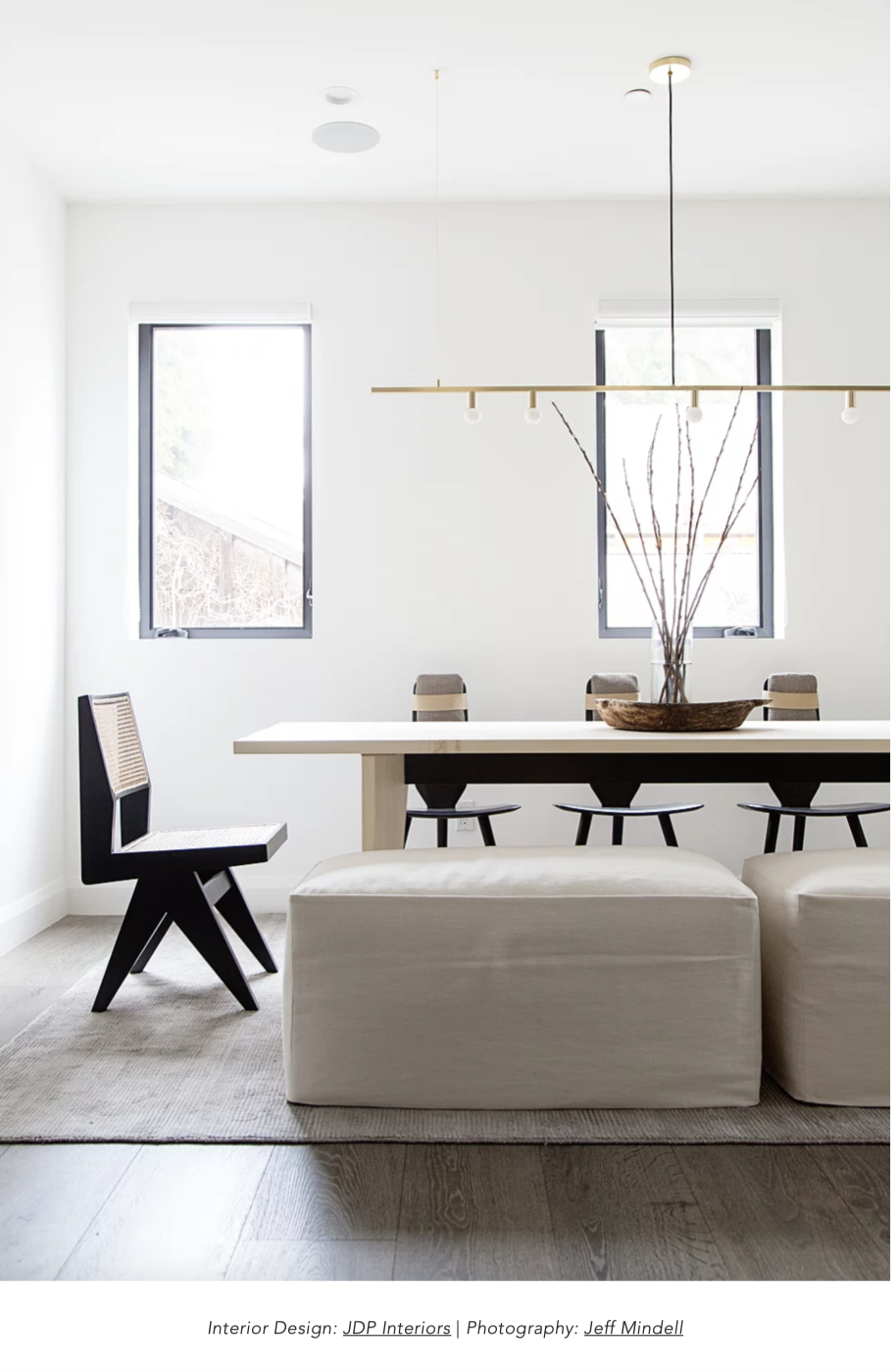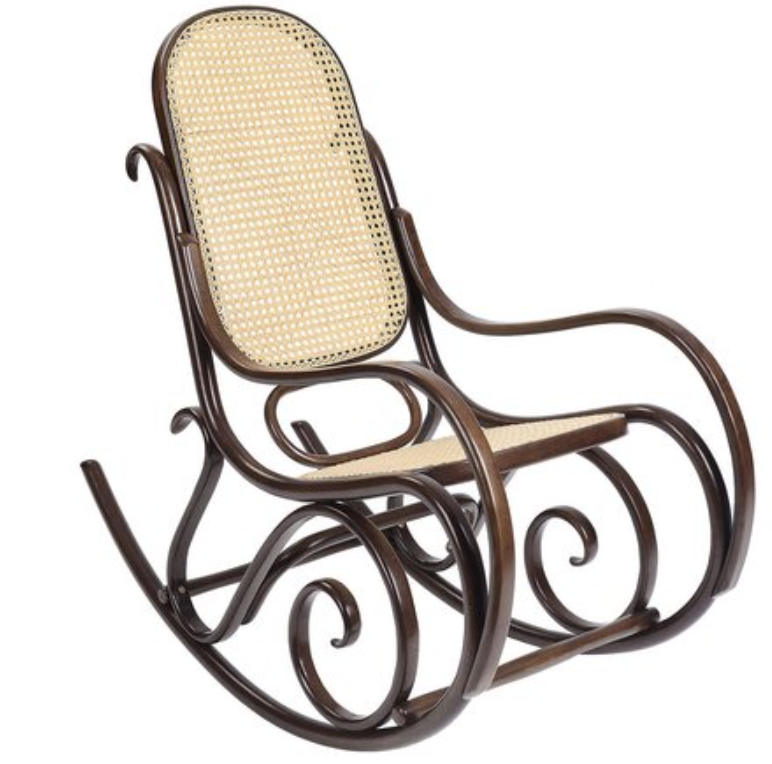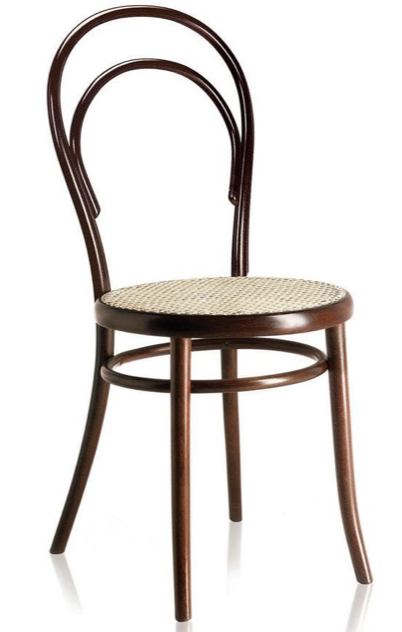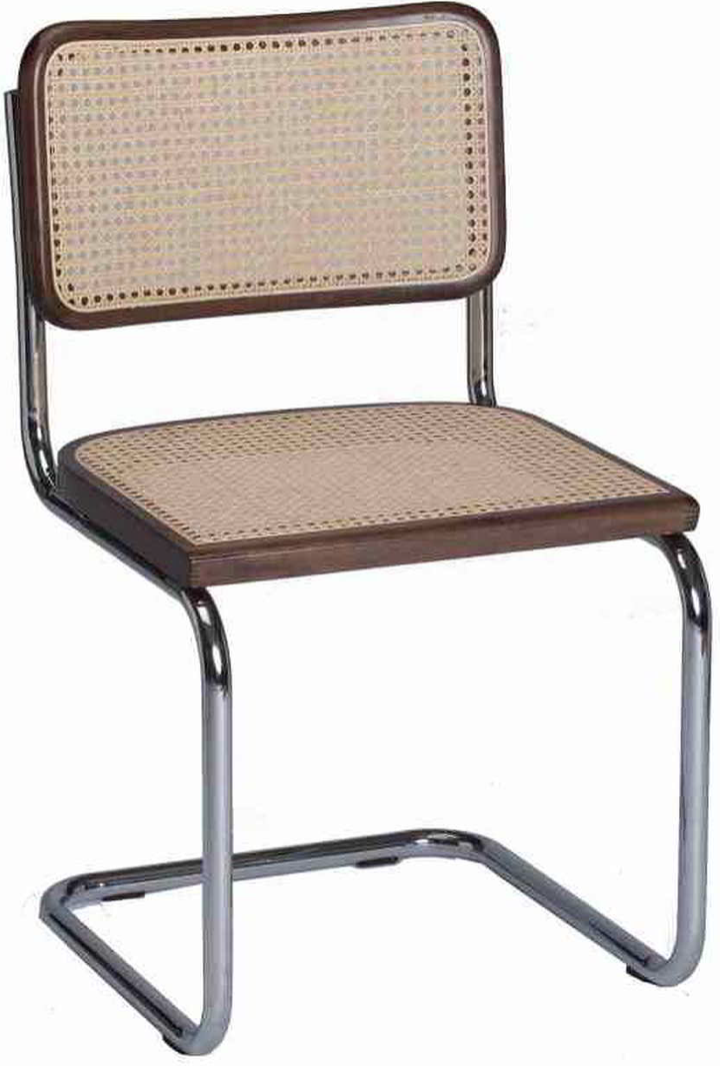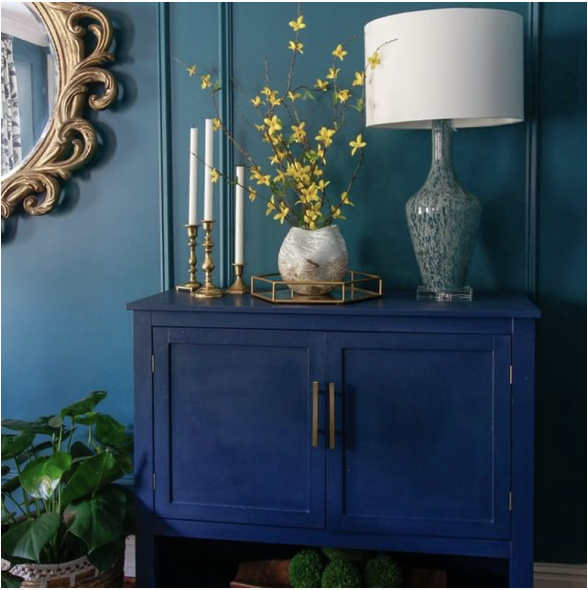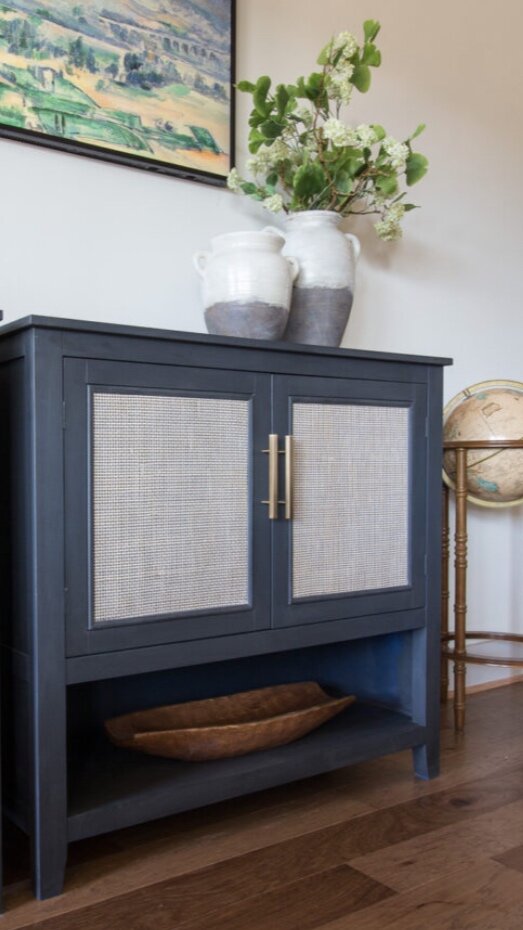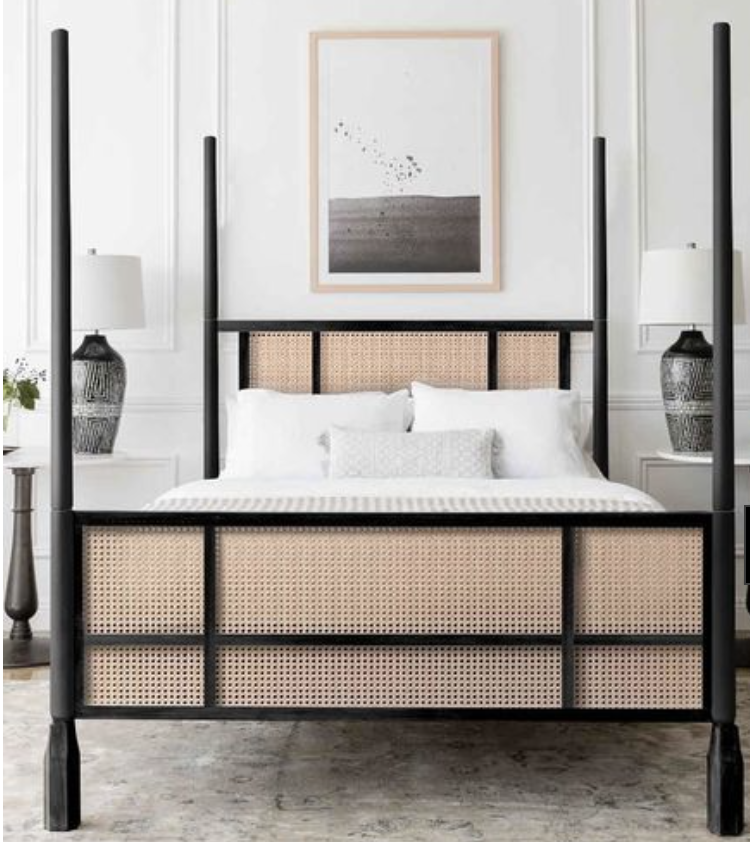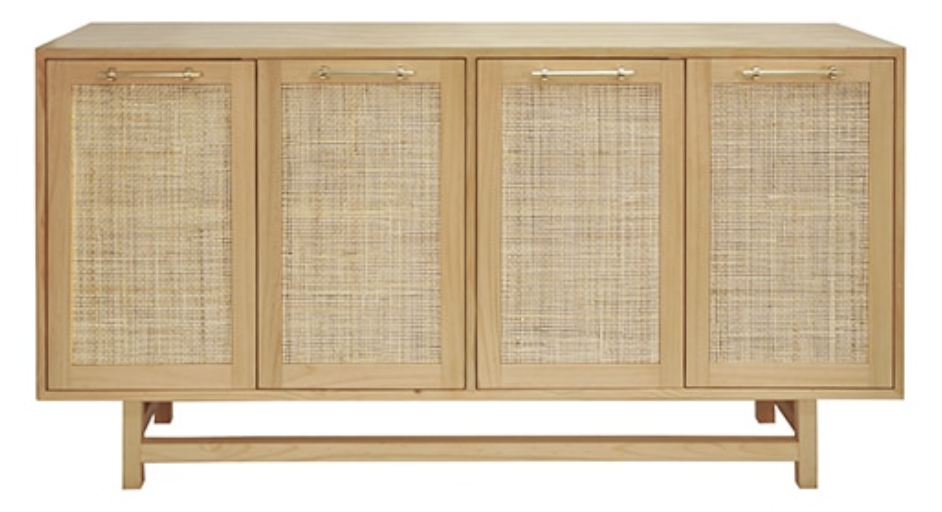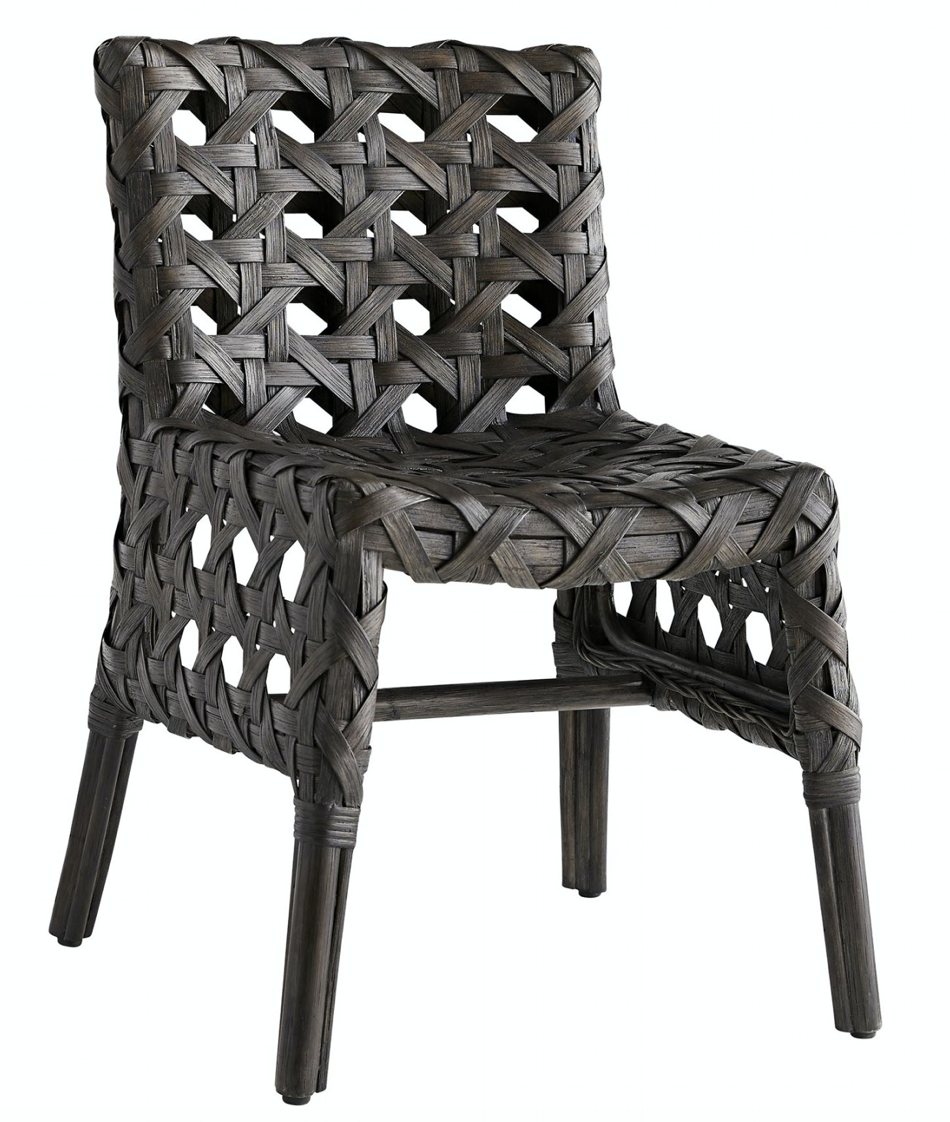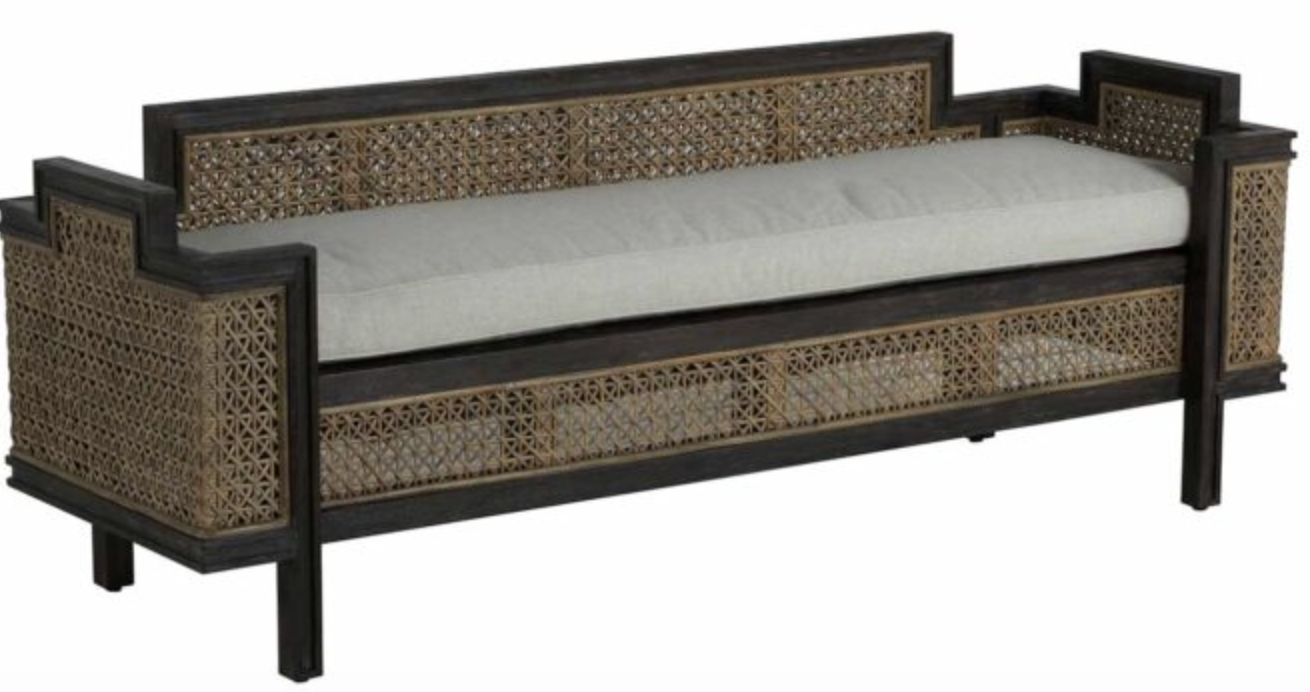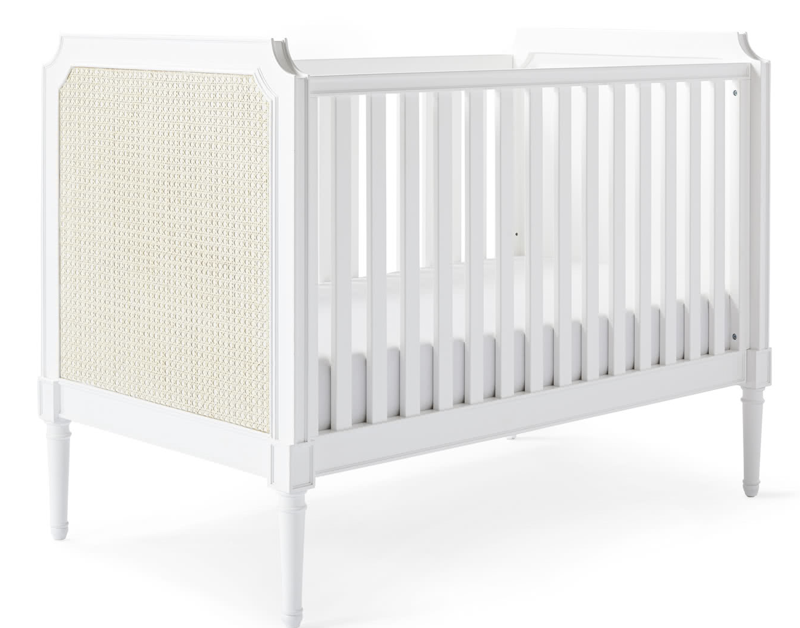Raising Cane
Maybe you haven’t noticed but cane is having a moment.
Although it’s been around for ages (really!), it’s undergoing a revival. IMHO it’s been resurrected by DIYers who have transformed vintage caned furniture. That has inspired furniture manufacturers to bring new pieces to market.
Three cane pieces are furniture and design icons: the Chair No. 1 rocking chair and Chair No. 14 bistro chair created by Michael Thonet, a German-Austrian cabinet maker, known for the invention of bentwood furniture, and the Cesca Chair created by Marcel Breuer. Thonet’s Chair No. 14, first made in 1860, was the first mass-produced piece of furniture. All three chairs have sold millions and are still in production today.
In the last few years, DIYers have embraced cane. Taking old cabinets and stripping and re-staining them, they’ve brought mid-20th century pieces into the 21st century furniture lexicon. The cabinet below was transformed by Leslie of Deeply Southern Home.
Why is cane having this moment? For one, it’s a sustainable resource made from the outer bark of the rattan plant, a climbing vine that grows in tropical forests. This feature has historically made it attractive in warmer climes due to its ability to withstand humidity and fluctuations in temperature. Design wise, it adds texture to spaces and, because it’s most often left in its natural state, it is intrinsically biophilic (see my previous blog post to read why that’s important). Because it’s see-through, cane also makes a space feel light and airy. Finally, it is relatively less expensive than other natural materials used in the manufacture of case-goods.
If you love to DIY, there are abundant tutorials and hacks online for converting existing furniture and cabinets to cane. But if you’re not up to DIY, there are a variety of pieces at numerous price points that will add this look to your home.

